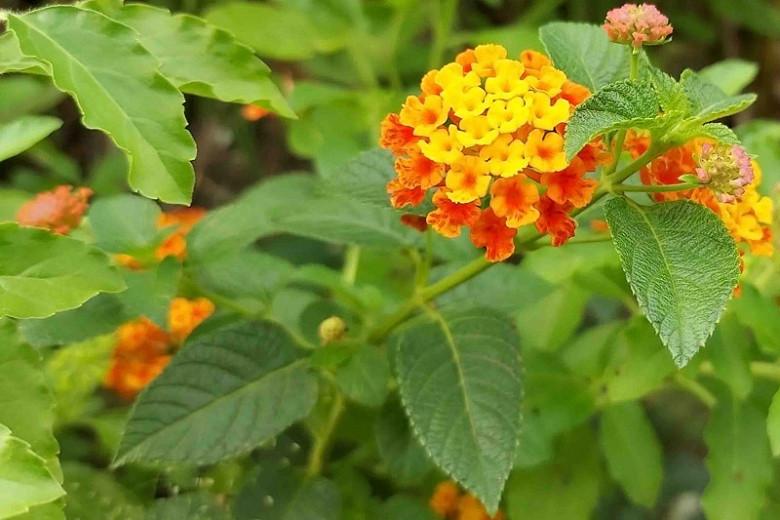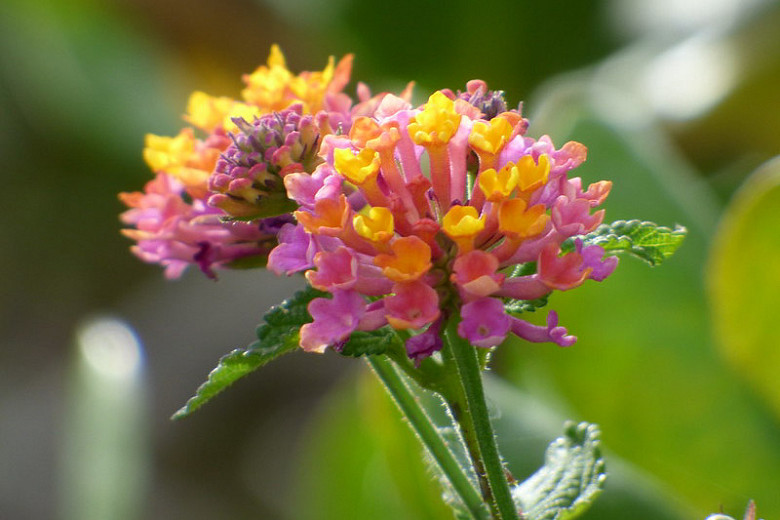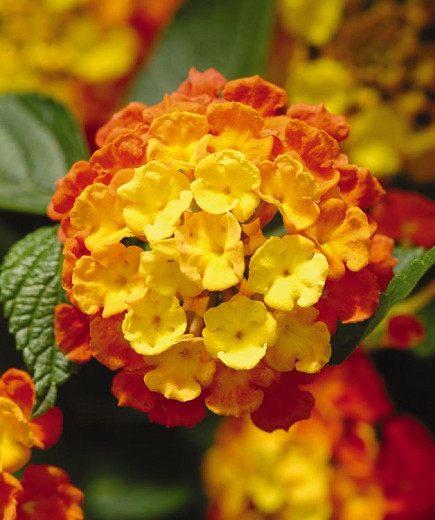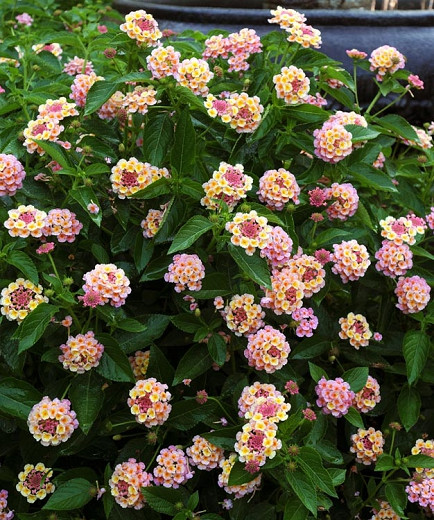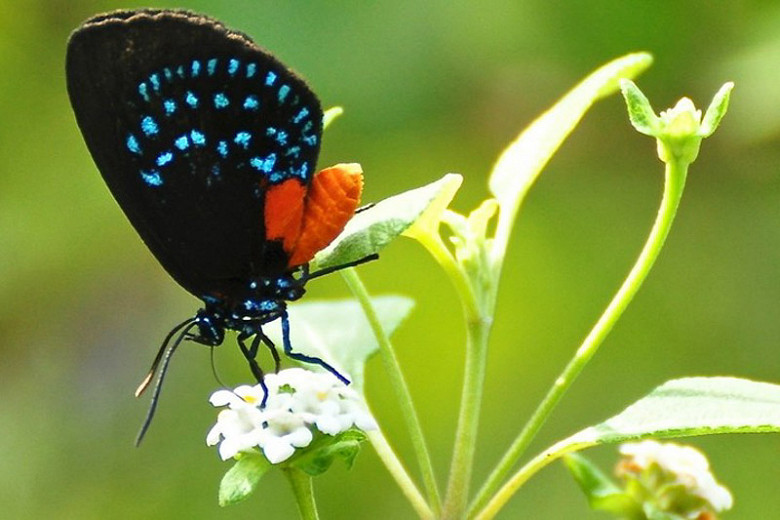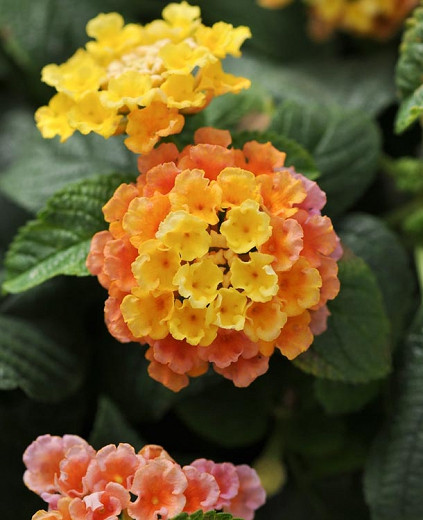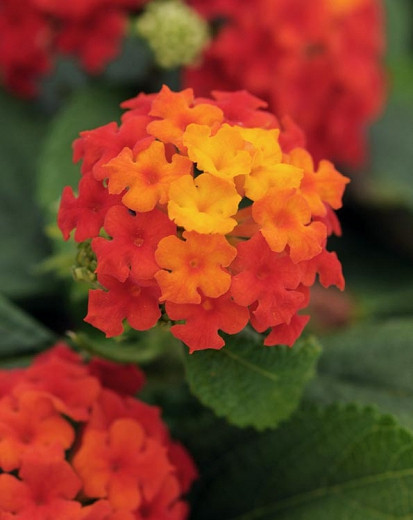Lantana urticoides (Texas Lantana)
Spectacular even in the worst heat of the summer, Lantana urticoides (Texas Lantana) is a spreading deciduous shrub forming a large bushy mound of broadly ovate, rough to the touch, toothed leaves, 2 in. long (5 cm). Blooming over a long season extending from mid-spring to fall, the shrub is literally covered with colorful tubular flowers held in dense, rounded clusters. Their color turns from yellow to orange to red as they mature. The blossoms attract bees, butterflies, and other pollinating insects. They are followed by round, fleshy, deep purple-black berries which are poisonous to most mammals (and humans) but are relished by birds. Texas Lantana is deciduous, dropping its leaves in the winter and exposing its stems of light gray, flaking bark. The wrinkled leaves are aromatic (pungent scent) when bruised. Texas Lantana is a tough, resilient plant valued for its long blooming season and its resistance to drought, heat, deer, and salt. It is a fine choice as a shrubby ground cover in dry, poor soil.
- Grows up to 2-3 ft. tall (60-90 cm) and 4-6 ft. wide (120-180 cm).
- Easily grown in poor, medium to dry, well-drained soils in full sun.
- Great for beds and borders, cottage gardens, coastal gardens, Mediterranean gardens, or in native plant gardens.
- No serious pest or disease issues. Deer resistant.
- Cut back in winter to control size and shape.
- Propagate by seed sown in late winter to spring, by cuttings in mid-summer to fall, or division in winter.
- Highly toxic if ingested, contact with foliage may irritate the skin. Wear gloves and other protective equipment when handling.
- Toxic to dogs, toxic to cats, toxic to horses, toxic to humans.
- Native to Arizona, New Mexico, and Texas.
Requirements
| Hardiness | 8 – 11 |
|---|---|
| Plant Type | Shrubs |
| Plant Family | Lantana |
| Exposure | Full Sun |
| Season of Interest | Spring (Mid,Late)Summer (Early,Mid,Late)Fall |
| Height | 2' – 3' (60cm – 90cm) |
| Spread | 4' – 6' (120cm – 180cm) |
| Spacing | 48″ – 72″ (120cm – 180cm) |
| Water Needs | Low, Average |
| Maintenance | Low |
| Soil Type | Clay, Loam, Sand |
| Soil pH | Acid, Alkaline, Neutral |
| Soil Drainage | Moist but Well-Drained, Well-Drained |
| Characteristics | Showy |
| Native Plants | United States, Southwest, Arizona, New Mexico, Texas |
| Tolerance | Deer, Drought, Salt |
| Attracts | Bees, Birds, Butterflies |
| Garden Uses | Ground Covers |
| Garden Styles | Coastal Garden, Informal and Cottage, Mediterranean Garden, Prairie and Meadow |
